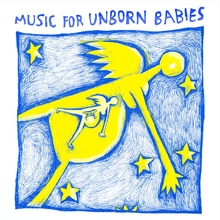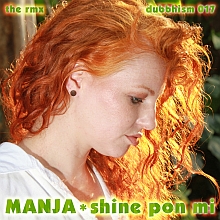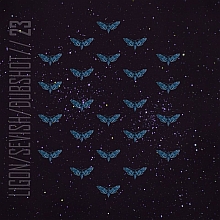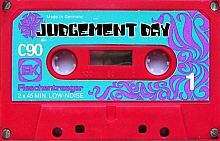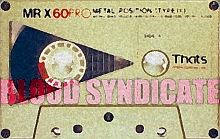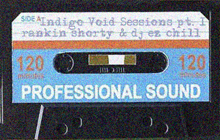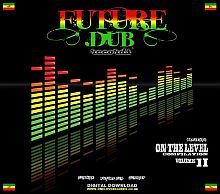
For thousands of years, astrologers worked with the Sun, the Moon and the visible planets from Mercury to Saturn. A relatively small selection of stars, often the brighter ones, was also considered. Nowadays new asteroids, stars and black holes are discovered automatically on a daily basis. Some are relevant for astrology.
Relevance of new objects
Asteroids are by far the most interesting group of new objects. But some asteroids are more interesting than others, so what is it that makes an object interesting? The pragmatic answer would be that astrologers can only work with it if it points to clearly discernable patterns of events or psychological states with a distinctive symbolic fingerprint. When we search for symbolic traces of new asteroids, some rocks are easy to spot while others remain obscure. There are several reasons for this. For example, the potential impact or salience of objects (measured in isolation as it were) can vary.
When we examine newly discovered asteroids, it's important to consider both their physical and metaphysical properties. Metaphysical properties include the name and its various associations, sometimes mythological themes, and also certain qualities that are related to the moment of discovery. 
The Sun has a lot of physical impact. Just look at its mass, its central position in the solar system and so on. The metaphysical impact of the Sun is also strong, as its symbolism is said to deal with the fundamentals of the individual life: the will to be and to express oneself, and the sense of personal identity at an instinctive level. But what about Pluto? In astrology this dwarf is overall remarkably potent, but physically speaking it's very unimpressive compared to the Sun. However, in the case of Pluto a relatively weak physique is compensated by a symbolic range of expression that centers around 'very big' themes like death and rebirth, power, sex and the unconscious mind. Using this kind of accounting, it shouldn't be surprising if new objects that are physically unimpressive turn out to have a relatively strong impact because of certain symbolic properties. (Centaurs like Pholus and Nessus come to mind.)
Symbolism of new objects
In part 2 of this series we noted that astrologers pay special attention to the place-and-time coordinates of new beginnings, like the birth of a child or the official registration of a new company. In the same way, the exact moment a new celestial object is discovered is also important. Every celestial object that has been discovered after the Galilean revolution has a discovery chart, containing information about its symbolic fingerprint. Note that this kind of information was not available before the 1600s. For asteroid astrologers discovery charts are crucial. Additionally, physical properties (all kinds of material and orbital details) can be useful, when translated into salient 'embodied' metaphors. For example, the orbits of Damocles (wild and unstable) and Sedna (in some sense all encompassing) can be seen as embodied metaphors. 
If/when an asteroid is officially named by the IAU this also gives extra hints about the symbolic fingerprint, but some official names are more 'symbolically correct' than others. For example, Richard Tarnas has argued that Uranus should really be called Prometheus from the mythical point of view. On the other hand there's a strong tendency for names of dwarf planets and asteroids to be quite right, or even exactly right. To be clear, celestial objects don't need an official IAU name for them
to be symbolically
'active'. For example, the unnamed asteroid 15874 (1996 TL66) is
associated with winning a large
sum of money in a lottery.
Rocks named after smart people
The majority of the thousands of asteroids named after award winning students and career
scientists are relatively unimportant for general astrological analysis. Asteroids named after the first + last name of smart people, like
Aaron Ammons (129100) and Aaron Burrows (22656) are especially likely to have limited relevance. Asteroids named after the last name of scientists with 'interesting' last names are a different story. Beer
(1896), Lie (26955) and Swindle (8690) come to mind. These suggestive, simple, down to earth names lack the mythical scope of planet names. They behave like fairly autonomous signs (in the
semiotic sense) with no relation to their name giver. In the case of Beer, Lie and Swindle, or less obviously Bida and Donald Duck, phonological, morphological and symbolic properties of the name itself are relatively important.
As the symbolic profile of a new object becomes more clear, it can be used to create richer, more accurate and more precise astrological interpretations. Dwarf planets and asteroids can also offer us a little more insight in the design of the great astrological clockwork, because of their systematic lack of respect for billiard balls causality.

The retroactive effect of new names
The recent avalanche of newly named objects has given astrologers new insight into the fundamentals of astrological order. There are all kinds of new phenomena to be studied, like for example significator-asteroids. It turns out that a person named Diana can have a special relationship with asteroid Diana (78) and a person named Anna can have a special relationship with asteroid Anna (265). Significator asteroids make life easier, as interpretation is straightforward and simple. On the other hand, the philosophical implications are deep.
If we examine the interaction between Uranus and asteroid Hannibal (2152), named after the famous Carthaginian warrior, we find that in 218 BC during the winter solstice, they were in a significant conjunction. Significant as in: right at that dramatic moment when Rome got its first taste of the actual Hannibal and his army in the 2nd Punic War. The Roman army lost some 30.000 men in the Battle of the Trebia. Their largest defeat since the war against the Gauls 125 years earlier. Of course, both Uranus and asteroid Hannibal were discovered and officially named long after the Punic Wars.
Going back to 218 BC is stretching it. We don't have many accurate sources of places-and-times, and most calculations of orbits aren't even good enough to examine the Middle Ages. So a detailed analysis of the Punic War isn't an option. But we can definitely take a look at more recent data. Why not analyze one of Carl Jung's dreams?

The death of Siegfried
Chapter VII of Carl Jung's famous Red Book is titled 'Murder of the Hero'. The symbolic murder takes place in one of Jung's dreams. The date is December 18, 1913. The victim is Siegfried, a mythical hero who in the dream represents Jung's ego. The death of Siegfried is a key moment in Jung's personal mythology. In Jung's birth chart transiting asteroid Siegfried (15147) is crossing Jung's natal Mars around this time. That's a symbolic direct hit. Asteroid Siegfried was discovered on the 11th of March 2000 and named after Ray Siegfried, chairman of the board of the aerospace NORDAM Group.
Losing one's head
Asteroid Red Queen (17518, December 18th 1992) is often prominently placed in charts of people who lose their head, as in decapitation or irrational behavior and loss of self-control. For example, an important aspect in Queen Consort Marie Antoinette's birth chart is her Sun-Venus-Red Queen conjunction.
On January 3rd 1889 the German philosopher Friedrich Nietzsche suffered an epic mental collapse. In Nietzsche's birth chart Red Queen is conjunct Mercury (0°08). Asteroid Nietzsche (7014) is also active in his chart, trining (120 degree angle) asteroids Sisiphus (endless task, persistence, refusal to admit or accept defeat, 0°31) and Aeternitas (eternal fame, 0°38). Asteroid Nietzsche was discovered on April 4th, 1989.
Jihadi John (Mohammed Emwazi) is seen in videos of extremist group ISIL that show the beheading of captives. Jihadi John was born on August 17th 1988 in Kuwait. Red Queen is conjunct Venus in his birth chart, suggesting that in some sense he was into decapitation.
Coherence
We could evaluate more anecdotal evidence of this phenomenon but for now these examples should do. The point is that this retroactive property of official names can be thought of as another symptom of the comprehensive physical~psychical coherence that seems to be implied by astrological order, as discussed in the previous post.

Some readers might want to discuss this causal 'anomaly' in terms of quantum-mysticism, a high tech simulation or singularity, or even a cosmic conspiracy involving aliens. That's all fine with me, enjoy.
Personally i'm reminded of the can of worms that was opened by theoretical physicists John Barrow and Frank J. Tipler when they wrote The Anthropic Cosmological Principle. The legacy of this book shows how cosmologists grapple with unexpected quantitative 'signs' of an almost intentional seeming, and therefore suspicious integral cosmic coherence that's conducive to the development of biological life. Of course Mr. Tipler messed up pretty badly when he also wrote a deeply confused rationalization of literal interpretations of the Christian Bible in his sadly hilarious book The Physics of Christianity.
I'd say that the astronomical/astrological name game, that has somehow produced lots of symbolically accurate, retroactive, IAU approved object names can be thought of as a linguistic variation on the numerical riddle of the anthropic principle, as discussed by physicists and cosmologists. Like i said previously: this causal 'anomaly' suggests to me that both astrological order and numerical order in some sense precede time and billiard balls causality.
Next time we'll focus on the subjectivity of astrological interpretation.


